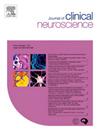上胸椎与下胸椎内固定的再手术率相似:利用国家管理数据库对7300例患者的分析
IF 1.8
4区 医学
Q3 CLINICAL NEUROLOGY
引用次数: 0
摘要
背景成人脊柱畸形(ASD)手术的一个关键方面是选择下胸椎(LT)或上胸椎(UT)的上固定椎体(UIV)。本研究比较了UT和LT脊柱融合患者的再手术率。方法采用全国保险理赔数据库PearlDiver进行回顾性分析。接受胸腰椎融合并骨盆固定至少7节段的ASD患者被纳入研究。主要观察指标为1年、2年和5年的再手术率。采用logistic回归和Kaplan-Meier生存分析对人口学和临床资料进行分析。结果共纳入7300例患者,其中6124例接受7-12节段内固定,1176例接受13节段以上内固定。非匹配分析显示骨质疏松症显著增加(18.8% vs 13.3%, p <;0.001)和骨质减少(27.0% vs 20.9%, p <;0.001)。在非匹配分析中,曲线形态显著不同,13+节段组显示出更高的脊柱侧凸、后凸和矢状面畸形发生率。1028例患者被纳入1:1匹配分析。匹配队列中7-12节段和13+节段的总再手术率分别为25.9%和25.5%。未匹配组和匹配组在1年、2年和5年的再手术率无显著差异。Kaplan-Meier分析显示两组患者无再手术概率相似。结论7-12节段脊柱内固定与13+节段脊柱内固定的再手术率无明显差异。Kaplan-Meier生存分析支持这些发现。需要进一步的研究来探索影响再手术率和长期预后的其他因素和手术技术。本文章由计算机程序翻译,如有差异,请以英文原文为准。
Similar reoperation rates in upper versus lower thoracic to pelvis instrumentation: an analysis of 7,300 patients utilizing a national administrative database
Background
A critical aspect of adult spinal deformity (ASD) surgery is selection of the upper instrumented vertebra (UIV) in the lower thoracic (LT) or upper thoracic (UT) spine. This study compares reoperation rates among patients fused to the UT and LT spine.
Methods
A retrospective analysis was conducted using PearlDiver, a national insurance claims database. ASD patients who underwent thoracolumbar fusion with pelvic fixation spanning at least 7 segments were included. The primary outcome was reoperation rates at 1-, 2-, and 5-years. Demographic and clinical data were analyzed using logistic regression and Kaplan-Meier survival analysis.
Results
7,300 patients were included, 6,124 undergoing 7–12 segments of instrumentation and 1,176 undergoing 13 + segments. Unmatched analysis revealed significantly greater osteoporosis (18.8 % vs 13.3 %, p < 0.001) and osteopenia (27.0 % vs 20.9 %, p < 0.001) in the 13 + segment group. Curve morphology significantly differed on unmatched analysis, with the 13+ segment group demonstrating greater rates of scoliosis, kyphosis, and sagittal plane deformity. 1,028 patients were included in a 1:1 matched analysis. Overall reoperation rate in matched cohorts were 25.9 % and 25.5 % for 7–12 segments and 13+ segments, respectively. No significant difference was found in reoperation rates at 1-, 2-, and 5- years in unmatched and matched cohorts. Kaplan-Meier analysis revealed similar reoperation-free probabilities between both cohorts.
Conclusion
This study found no significant difference in reoperation rates between patients with 7–12 and 13+ segments of spinal instrumentation. Kaplan-Meier survival analysis supports these findings. Further research is needed to explore other factors and surgical techniques contributing to reoperation rates and long-term outcomes.
求助全文
通过发布文献求助,成功后即可免费获取论文全文。
去求助
来源期刊

Journal of Clinical Neuroscience
医学-临床神经学
CiteScore
4.50
自引率
0.00%
发文量
402
审稿时长
40 days
期刊介绍:
This International journal, Journal of Clinical Neuroscience, publishes articles on clinical neurosurgery and neurology and the related neurosciences such as neuro-pathology, neuro-radiology, neuro-ophthalmology and neuro-physiology.
The journal has a broad International perspective, and emphasises the advances occurring in Asia, the Pacific Rim region, Europe and North America. The Journal acts as a focus for publication of major clinical and laboratory research, as well as publishing solicited manuscripts on specific subjects from experts, case reports and other information of interest to clinicians working in the clinical neurosciences.
 求助内容:
求助内容: 应助结果提醒方式:
应助结果提醒方式:


